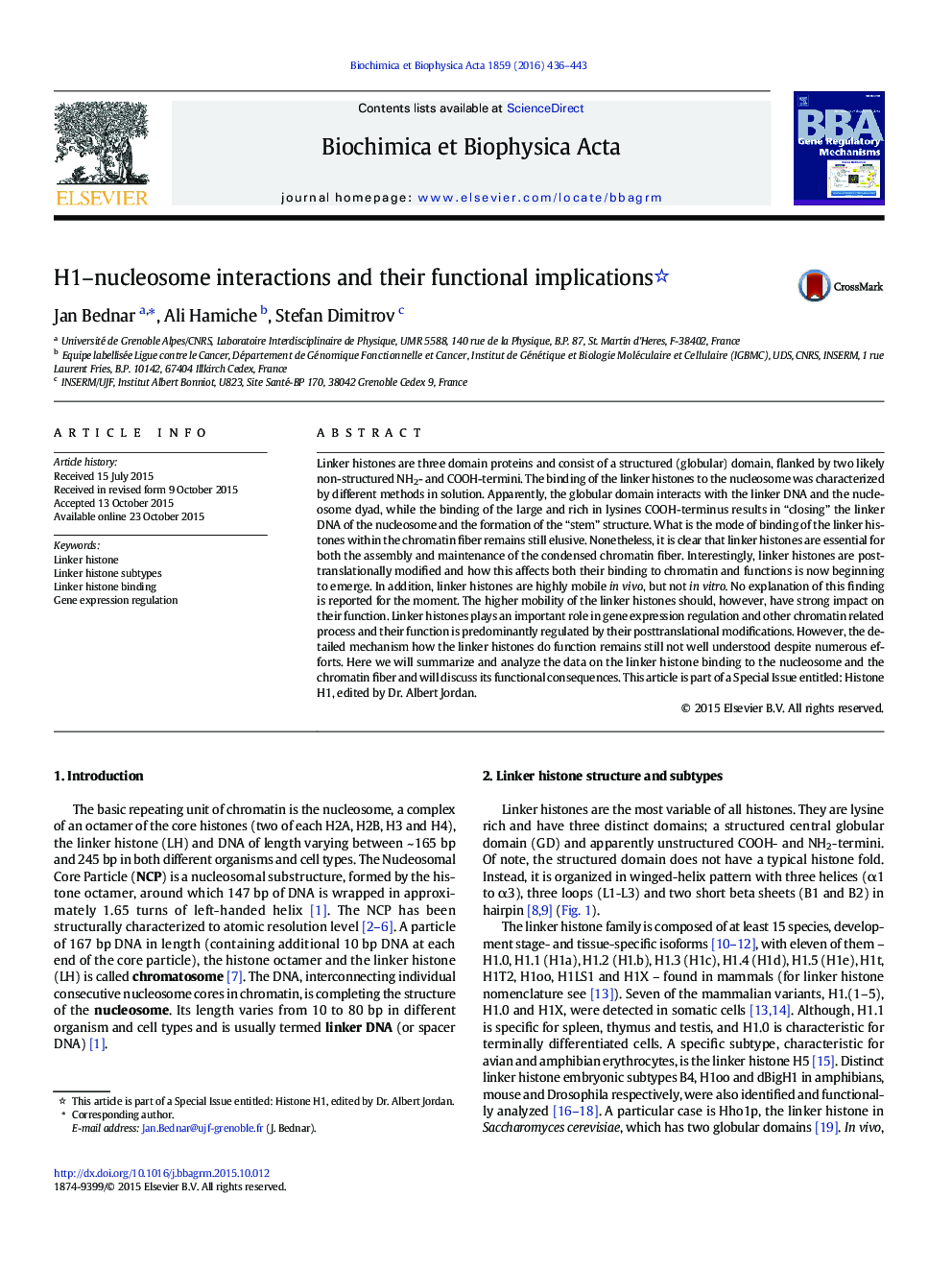| Article ID | Journal | Published Year | Pages | File Type |
|---|---|---|---|---|
| 10798918 | Biochimica et Biophysica Acta (BBA) - Gene Regulatory Mechanisms | 2016 | 8 Pages |
Abstract
Linker histones are three domain proteins and consist of a structured (globular) domain, flanked by two likely non-structured NH2- and COOH-termini. The binding of the linker histones to the nucleosome was characterized by different methods in solution. Apparently, the globular domain interacts with the linker DNA and the nucleosome dyad, while the binding of the large and rich in lysines COOH-terminus results in “closing” the linker DNA of the nucleosome and the formation of the “stem” structure. What is the mode of binding of the linker histones within the chromatin fiber remains still elusive. Nonetheless, it is clear that linker histones are essential for both the assembly and maintenance of the condensed chromatin fiber. Interestingly, linker histones are post-translationally modified and how this affects both their binding to chromatin and functions is now beginning to emerge. In addition, linker histones are highly mobile in vivo, but not in vitro. No explanation of this finding is reported for the moment. The higher mobility of the linker histones should, however, have strong impact on their function. Linker histones plays an important role in gene expression regulation and other chromatin related process and their function is predominantly regulated by their posttranslational modifications. However, the detailed mechanism how the linker histones do function remains still not well understood despite numerous efforts. Here we will summarize and analyze the data on the linker histone binding to the nucleosome and the chromatin fiber and will discuss its functional consequences. This article is part of a Special Issue entitled: Histone H1, edited by Dr. Albert Jordan.
Related Topics
Life Sciences
Biochemistry, Genetics and Molecular Biology
Biochemistry
Authors
Jan Bednar, Ali Hamiche, Stefan Dimitrov,
